WordPress is a powerful content management system that helps businesses create and manage their websites. By connecting WordPress to Microsoft Excel with Coefficient, you can easily import your website data into a spreadsheet for further analysis and reporting.
Follow this quick tutorial to set up the integration and start pulling in your WordPress data into Excel in minutes.
Prefer video? Watch the tutorial here!
Advantages of Analyzing WordPress Data in Excel
- Gain a comprehensive view of all your posts, pages, comments, and categories in one central spreadsheet
- Analyze your content performance with Excel’s powerful data manipulation and visualization features
- Create custom content reports and dashboards to share with your team and stakeholders
- Combine WordPress data with other data sources for deeper insights and decision-making
Step-by-Step Guide: Connecting WordPress to Excel
Before you begin, install the Coefficient add-in for Excel if you haven’t already.
Step 1. Install Coefficient
You can either get started here or open Excel from your desktop or in Office Online. Click ‘File’ > ‘Get Add-ins’ > ‘More Add-Ins.’
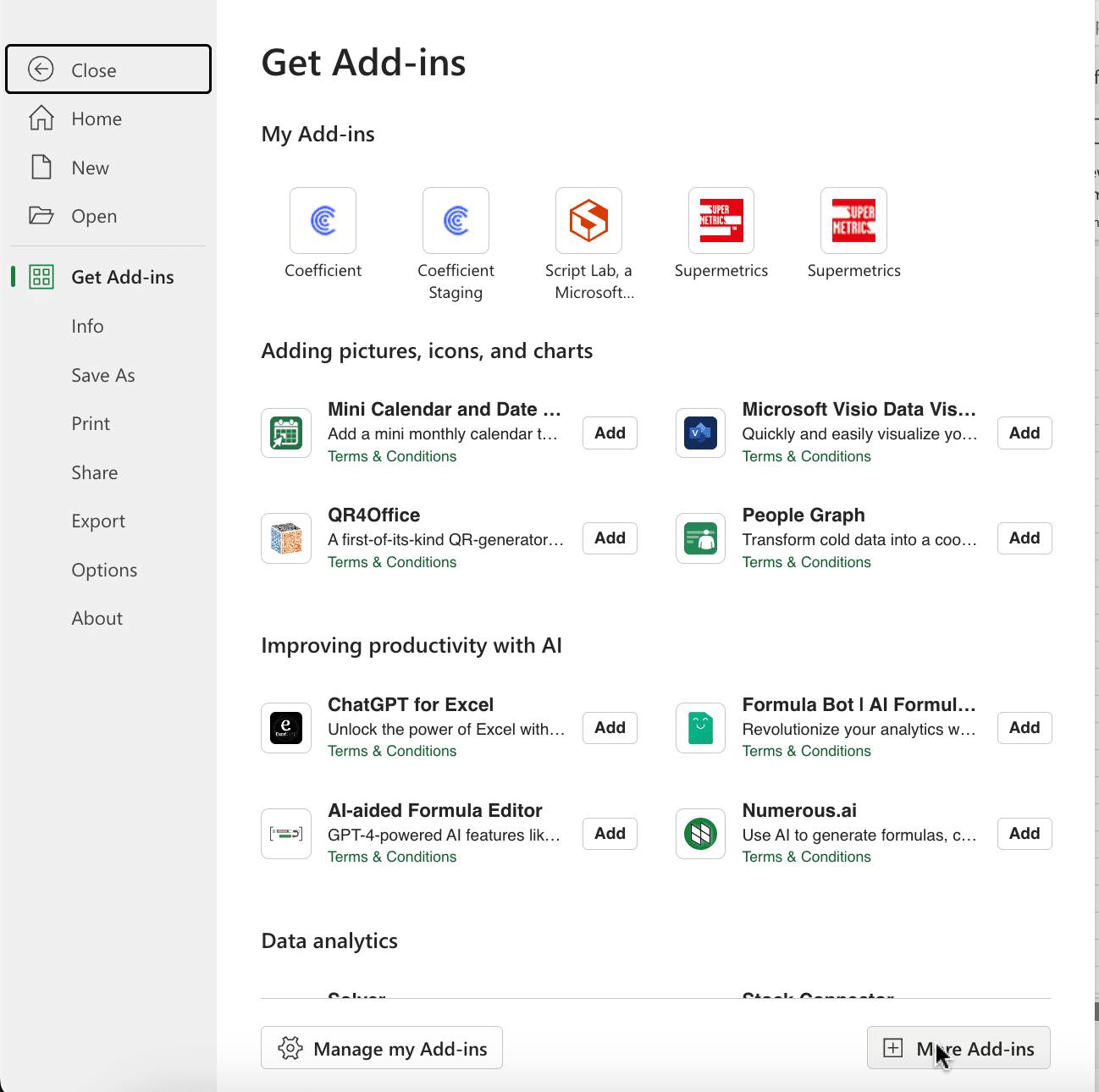
Type “Coefficient” in the search bar and click ‘Add.’

Follow the prompts in the pop-up to complete the installation.
Once finished, you will see a “Coefficient” tab in the top navigation bar. Click ‘Open Sidebar’ to launch Coefficient.
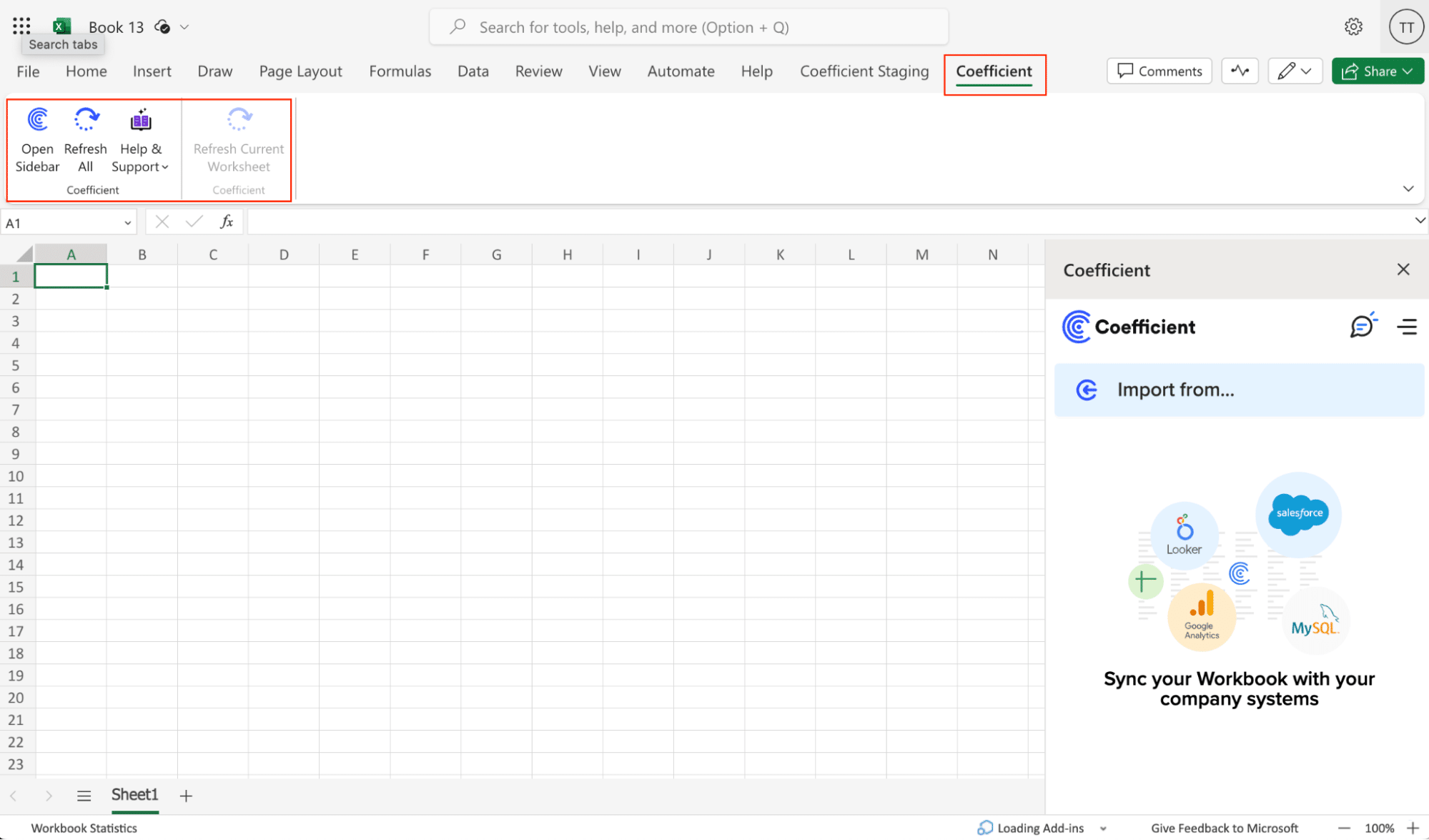
Step 2: Add WordPress as a data source
Open the Coefficient sidebar in Excel
Click “Add a Data Source” and select WordPress from the list
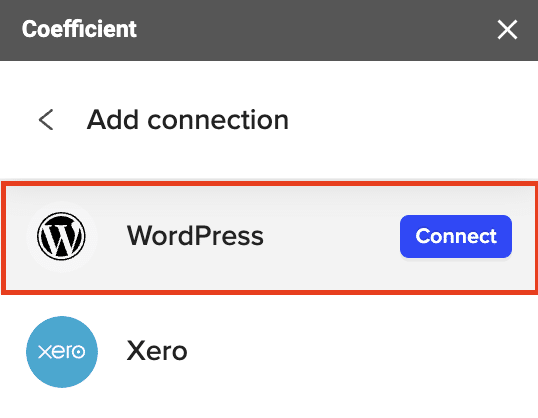
Enter your WordPress site URL and authorize the connection

Step 3: Select the data to import
Return to WordPress after authorization is compete. Select “Start from Scratch.”
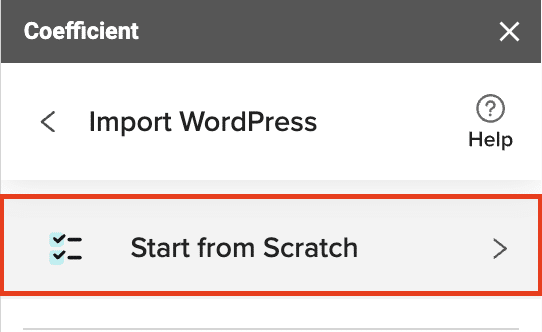
Choose an object to import: Posts, Pages, Comments, or Categories

Stop exporting data manually. Sync data from your business systems into Google Sheets or Excel with Coefficient and set it on a refresh schedule.

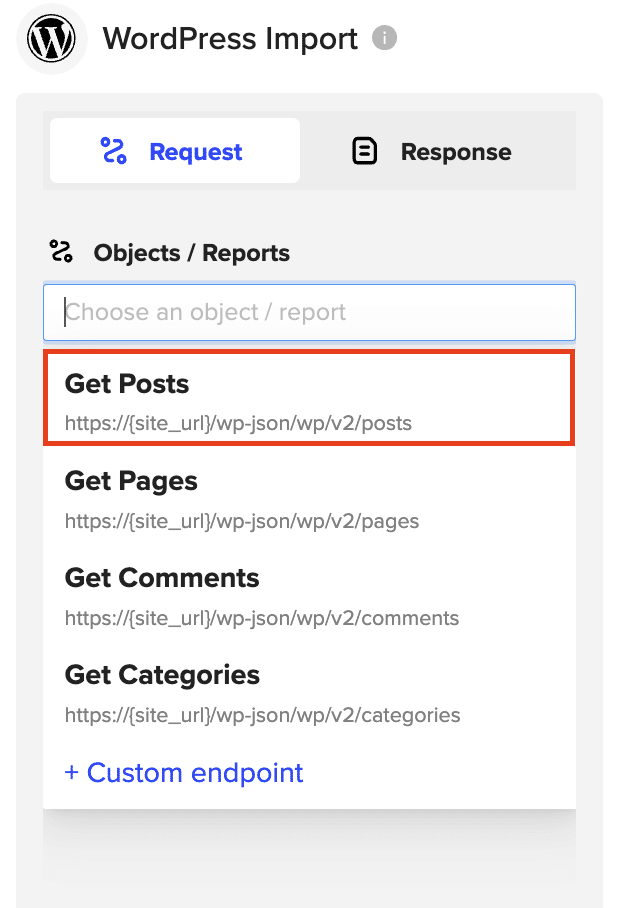
Click “Preview” to see available data fields

Select the fields to include, rename columns if desired, and reorder them to match your preferred spreadsheet layout
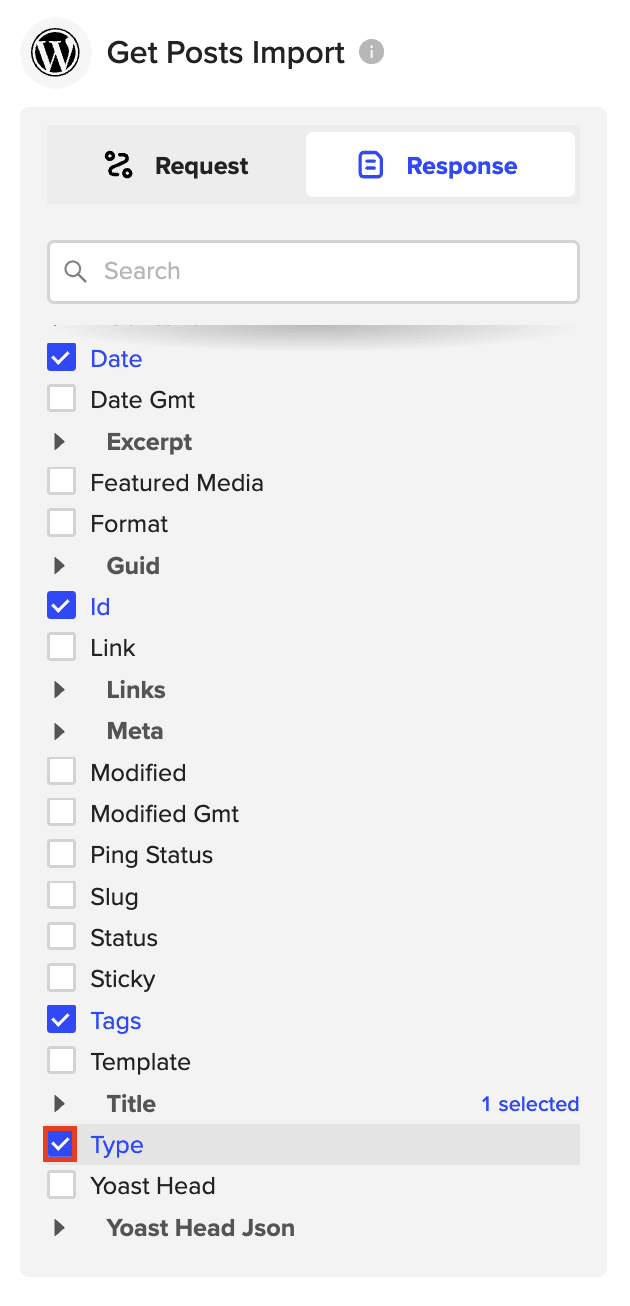
Step 4: Import the data into Excel
Click “Import” to pull the selected WordPress data into a new Excel sheet

Step 5. Set Up Auto-Refresh
After importing your data into your spreadsheet, you can activate Coefficient’s auto-refresh scheduler for automatic updates.
Just select your frequency (hourly, daily, or weekly) and the specific time, and Coefficient will handle the rest.
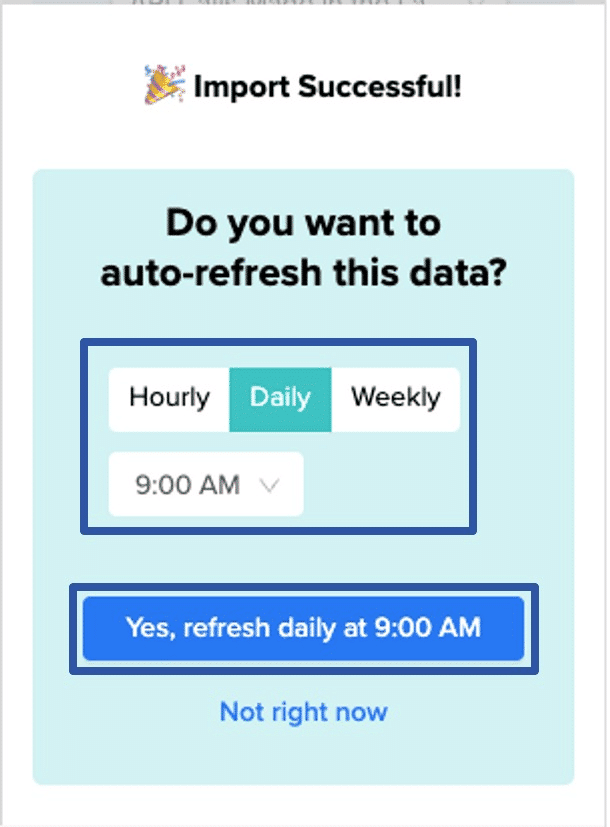
Use Cases for WordPress Data in Excel
- Monitor content performance: Import key metrics like post views, comments, and social shares. Identify top-performing content and optimize underperforming posts.
- Streamline content audits: Pull in all your posts and pages to easily assess your content inventory. Identify gaps and opportunities for improvement.
- Analyze user engagement: Import comments data to gauge reader engagement and sentiment. Respond to comments directly from your spreadsheet.
Tips for Using Live WordPress Data in Excel
- Automate data refreshes to sync new WordPress content and metrics into your spreadsheets on a set schedule
- Use Excel charts and pivot tables to visualize content trends and patterns
- Create spreadsheet templates to standardize content reporting and analysis across your team
Simplify Content Management by Connecting WordPress to Excel
Coefficient makes it easy to import your WordPress data into Excel for more flexible analysis and reporting. With just a few clicks, you can sync all your key content data and start uncovering actionable insights to improve your website performance.
Ready to get started? Install Coefficient and connect WordPress to your spreadsheets today: https://coefficient.io/get-started


